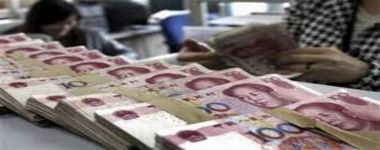The devaluation of the Renminbi these past few months is a backward step in China ‘s current challenging program to rebalance its economy, and achieve sustainable economic growth.
The devaluation of the Renminbi (RMB) these past few months is a backward step in China ‘s current challenging program to rebalance its economy, and achieve sustainable economic growth.

The Chinese central bank has devalued the RMB by 3% since end-2013, reversing the trend of the previous years (China does not have a freely floating exchange rate, as do most advanced economies). The RMB had appreciated by over 30% from 2005 to end-2013, and taking account of inflation, the real appreciation was a lot more. An appreciating currency is the normal tendency for a rapidly developing economy with rising productivity, which allows consumers to benefit from lower priced imports.
The US Treasury is up in arms over this devaluation, which it calls “unprecedented”. Treasury is worried about the impact on US export competitiveness, especially given the fragility of the US economic recovery.
The Chinese may have devalued the RMB in part to wrong-foot currency traders for whom the previous appreciation trend was a one-way bet, and was pumping up hot capital flows into China. But it seems more than likely that China is also worried about its exports and fragile economy, especially its shaky financial sector.
Whichever way, this devaluation move is also a backward step in China’s challenging program of rebalancing its economy. Postponing medium term reform imperatives because of the current economic weakness will prove costly, as demonstrated by the case of Japan.
An undervalued RMB exchange rate has been one of the key elements of China’s export-driven growth strategy these past few decades as it makes its exports cheaper on international markets. Some still debate whether the exchange rate is really undervalued, and to what extent.
But an immense $4 trillion of foreign exchange reserves have been accumulated by intervening in foreign exchange markets to hold down the RMB. This is clear evidence of manipulation of the RMB exchange rate. Even in the first three months of this year, with a falling RMB, China has continued to buy foreign exchange, some $129 billion, again revealing the hand of the central bank in pushing down the RMB.

